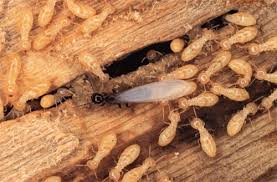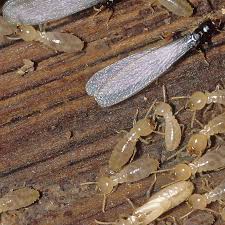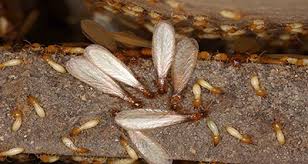Not known Factual Statements About Termite Control For Plants
Installing a reticulated system under the concrete slab enables chemical barriers to be applied and re-applied whenever necessary. The National Construction Code (NCC) requires termite prevention to be incorporated during the construction of new and existing buildings in Australia.
These measures rely on barriers to prevent termites entering the assumptions or lumber from the underlying land. Currently, two different types of obstacles are physical, utilized or chemical, often in combination.


Some Known Details About Termite Control For Trees
Stone barriers can be installed surrounding and/or underneath concrete slabs or beneath a suspended floor. Unfortunately this type of barrier is not acceptable for tropical northern places, which are inhabited by big termites (Mastotermes Darwiniensis) that can make their way through a standard granite chip barrier.
In the previous new houses were protected by spraying the sand pad with organochlorine chemicals. An increased awareness of the effects of the chemicals on both health and on the environment resulted in the Commonwealth Government banning the use of organochlorines from 30 June 1995. It is however important to remember that the pesticides or termicides which have substituted organochlorines are not as effective in the longer term. .
There are environmentally friendly methods of control pest controllers. If you opt for this method it might not always be as powerful as the methods described on page 1 of this fact sheet.
Many new buildings use a termicide treated coating of dirt surrounding and under the building. This creates an integrated barrier, together with the physical techniques mentioned previously. The termicide is placed on the soil under the slab and around the footings, pipes, conduits and other structures of the home during construction to make a vertical barrier.
The Best Guide To Termite Control For Trees
Timber used to construct houses, outbuildings, fences and other outdoor structures can be treated with substances. These are commonly referred toas treated timbers and ought to be considered at the time of designing or constructing the buildings.
To successfully incorporate termite obstacles into existing buildings, tactical drilling through concrete slabs, porches, flooring and wall footings might be needed, in addition to under ground treatment.
Building and Energy recommends only licensed pest controllers execute this job. Chemical baits Strategically placed bait stations can be employed to lure termites into a food supply, for example dry wood or newspaper refuse. About 30 bait stations are needed for a home and they need to be inspected regularly to evaluate activity. .
Once the termites are attracted to the bait station, a specific termicide is inserted that sticks into the have a peek at these guys termite.
The Facts About Termite Control For Soil Uncovered
To deal with termites in the garden, specialised pest managers drill into timber or the trunk of a tree to insert temperature probes which help to locate the termite nest. Despite routine inspections of the garden, termites can still enter the house. In the house, first indicator might be a slight discolouration of a wall , followed by warping if wood panelling is used to line the wall.
Make time to investigate the size and nature of the issue in addition to the options available for termite eradication. .
Whichever system you select, it's important to do regular inspections in particular inspect your property every six months for any apparent signs of infestation. Building and Energy recommends you arrange for an inspection by a licensed pest control operator at least once per year to look for signs of infestation and to undertake any preventative steps. .

5 Easy Facts About Termite Control For Soil Explained
For existing buildings, where you have already found signs of infestation, chemical treatment is usually the only option for destroying the termite nest. This treatment can include re-establishing a chemical and/or physical barrier plus regular inspections to detect any ongoing or new termite activity.
Treatment with a termicide into tunnels of this nest in which termites are known to be more active can reduce numbers, but it seldom eliminates the colony altogether unless it is used in conjunction with another method.
When buying an existing home, Consumer Protection recommends including a White Ant Certificate clause in the Offer and Acceptance form. This is intended to make certain that the residence is free of termites and there's no structural damage from any prior infestation. A separate fact sheet about the need for timber pest inspections and reports when buying property is available in the Department of Commerce by contacting the Consumer Protection Advice Line on 1300Â 304Â 054.